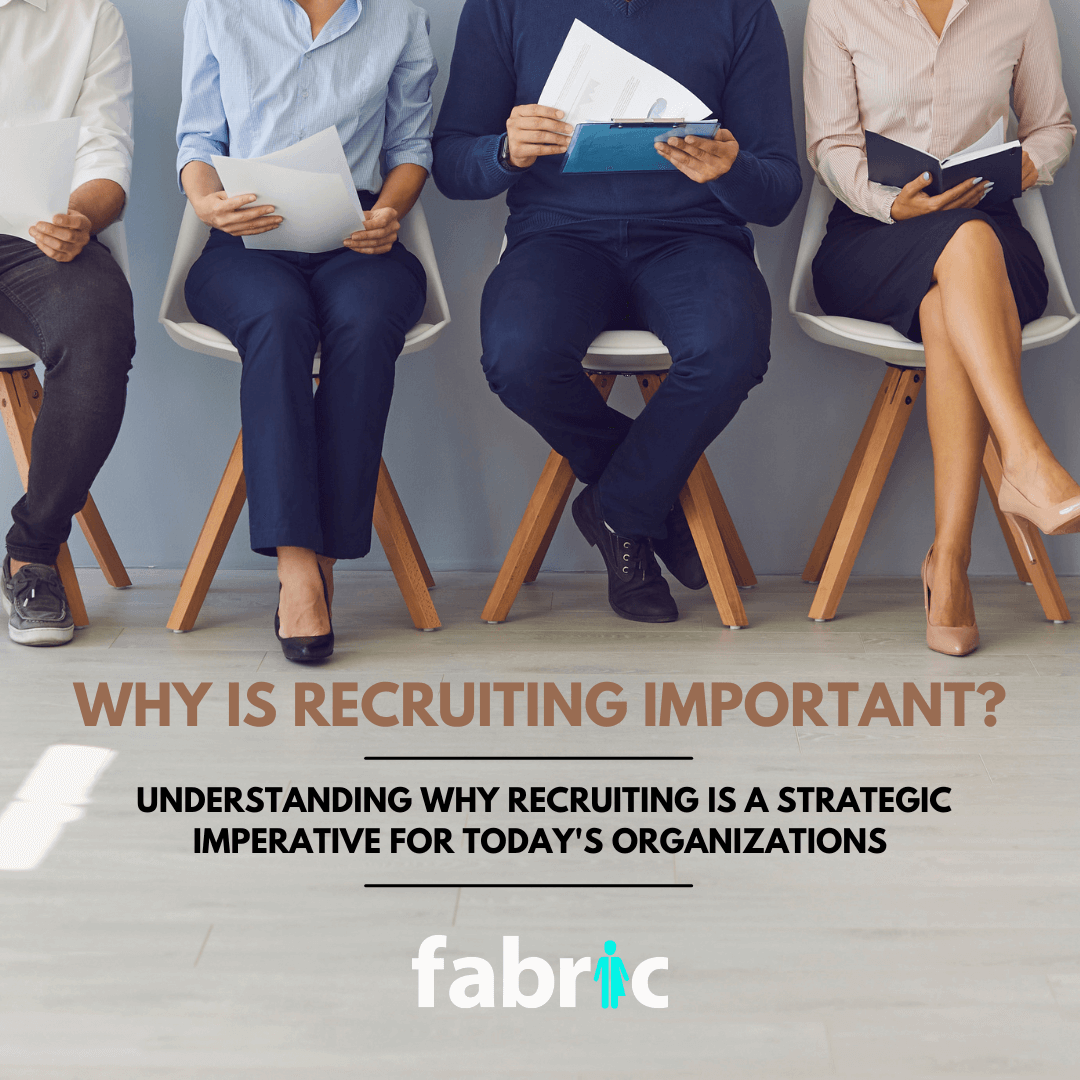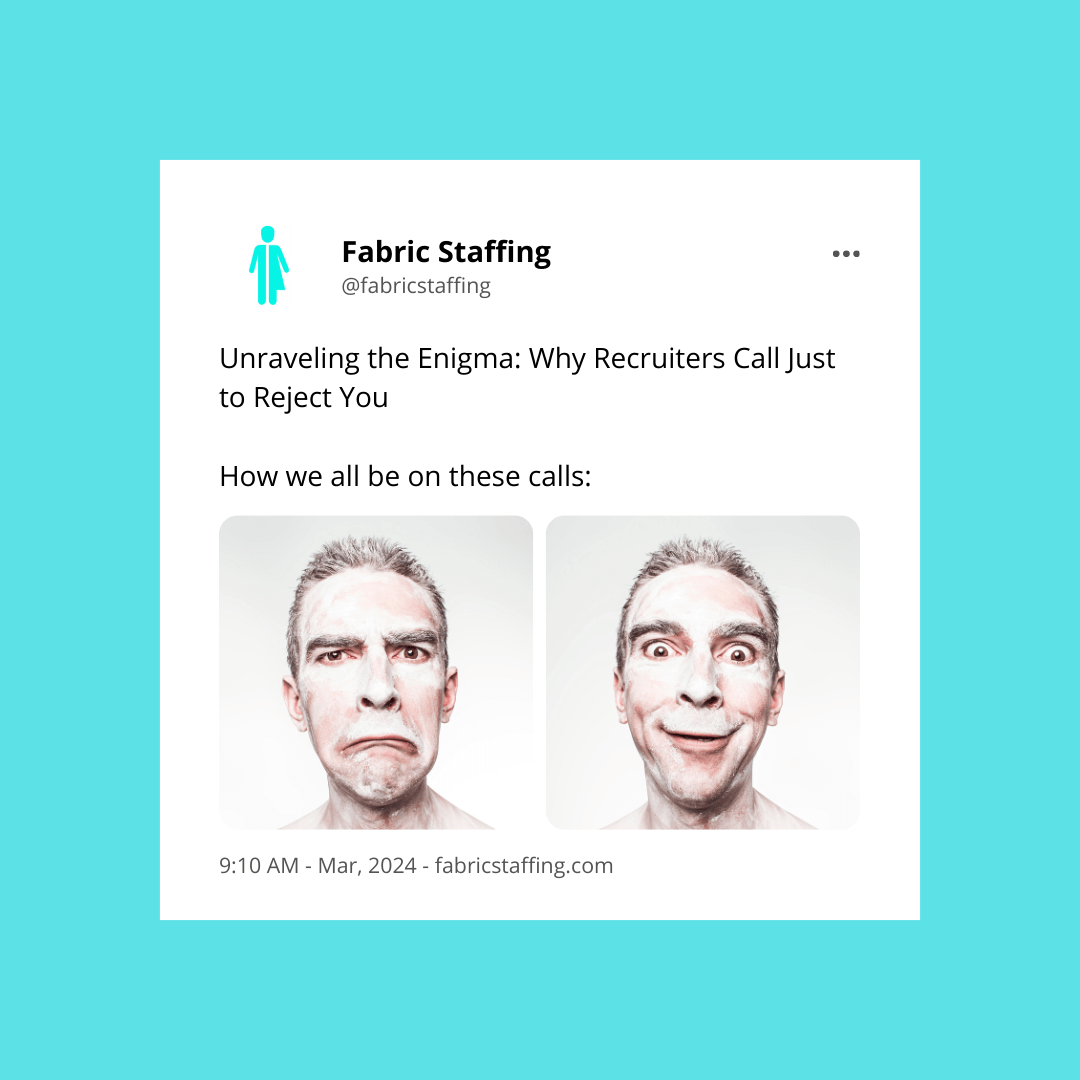 Many people can agree that hiring processes are some-what emotionally taxing for all participants. Everyone has someone or something that is interdependent upon the outcome of the hiring process. Companies are intently looking for the best people to grow their company, correspondingly job seekers are looking for the best company that will enhance their professional careers. Both parties are aware of how they want to spend their non-reimbursable time.
Many people can agree that hiring processes are some-what emotionally taxing for all participants. Everyone has someone or something that is interdependent upon the outcome of the hiring process. Companies are intently looking for the best people to grow their company, correspondingly job seekers are looking for the best company that will enhance their professional careers. Both parties are aware of how they want to spend their non-reimbursable time.
How do we create successful hiring processes that are effortless and comfortable for all?
At Fabric Staffing we believe the best hiring processes are honed over time, blending a variety of techniques dependent upon actively listening to candidates moving through the hiring process.
Listening helps us learn about the current struggles of our clients’ and candidates’ experience. Understanding the needs of everyone involved in the hiring process lets us formulate a strategic hiring process that is effortless and comfortable for everyone.
The most common critiques recorded from candidates within current hiring processes are receiving little to no feedback on interviews, resumes, and tests; drawn-out hiring processes; lack of information, and clear communication. From our client perspective, the most common issues recorded are candidates falling out of the process; quality of applicants; and opportunity cost (time & money). All of these issues within hiring processes can and are avoidable.
Establishing strategic and effective hiring processes allow employers and applicants to experience quality hiring processes that save everyone opportunity cost. To implement an effective hiring process, employers first determine a definitive need for each job, project a time frame, build a strategy, create detailed job descriptions, and optimize overall implementation/management.
Hiring Processes Tip 1: Need
What is the strategic need for this role? What problem does it fix?
The first tip for developing a successful hiring process is determining a definitive need for the job/role/function at hand.
Employers, ask yourselves:
- Do you foresee a lasting need for this job/role/function?
- Can you promote an employee internally to fill the need for this job?
- Do you need a senior-level hire, or will junior or mid-level employees suffice?
- Do you need to hire, or can the functions of this job be broken down and distributed to other employees?
Employers with a clear and definitive understanding of their company’s hiring needs can develop a smooth and efficient hiring process. Employers unable to foresee a definitive need for a specific role or job function may pursue other solutions like: Part-time employment, freelancers/contractors, outsourcing, or internally distributing the job functions to team members. Other solutions may involve promoting or training employees within the company and/or hiring more junior – mid-level employees.
Many new and/or existing companies find great satisfaction and results when they collaborate with employment agencies that help optimize and develop unique and authentic hiring solutions.
Hiring Processes Tip 2: Time Frame
When does the job need to be filled?
After we have assessed a definitive need for each job. The next step to successfully manage hiring processes is: Establishing a clear time frame for each step within the hiring process. This is important because a projected timed frame helps prioritize the urgency in which jobs are needing to be filled and creating weekly/monthly accountability goals for everyone.
Example:
- Prioritize what jobs need filling
- Create a standardized reporting process and time-frame for recruiters to check-in/give candidate feedback
- Set dates for when each goal should be accomplished (example: each job should be filed within 28 days).
- Create a clear standardized procedure for hiring managers and/or employment agencies (example: all first-round interviews finished by day 14, all 2nd round interviews finished by day 21, and all final interviews finished by day 28)
It is no secret that applicants prefer hiring processes with fast turnaround times. Employers also know exceptional talent does not stay on the market long. In order to obtain the best talent, employers must develop processes with the agility and flexibility to make fast candidate hires. As well as develop strategies that help accurately sues applicant quality.
 Hiring Processes Tip 3: Strategy
Hiring Processes Tip 3: Strategy
How many hires and how to hire?
Another tip for strengthening your hiring process is structuring and implementing an effective strategy. Some companies might hire internal recruiters that manage their hiring processes, contract staffing/employment agencies, and/or do both.
The decision on which hiring strategy is the best strategy is frequently dependent upon the company’s need; the number of employees needed, the type of role, and available resources (money).
For more information on what recruiting resource is optimal for your hiring process check out our earlier article: Understanding Tech Recruiting: Types of Tech Recruiters
When developing/optimizing your hiring process strategy be sure to consider:
- Consistent and authentic candidate engagements (keeping candidates “warm”)
- Continuously improve/optimize processes; time; efficiency; and candidate engagements.
Hiring Processes Tip 4: Job Description
What are you really hiring/looking for, what problem are you trying to solve?
One of the most important ways to successfully optimize hiring processes is by writing clear and concise job descriptions. Job descriptions should not be used as an employer’s wish-list or checklist for a candidate. Job descriptions are the first thing potential candidates look for when looking to understand what a company does, what the job advertised entails, and if the candidate feels confident enough to apply. If a job description is too “unicorn” or the verbiage is too authentic, it may cause confusion for job seekers. Resulting in employers missing out on qualified candidates.
Currently, a vast amount of job descriptions within modern hiring process are generic, long-winded, uninformative, or just bad. Great job descriptions are brief yet informative instructions about the company, the job, requirements/expectations, all within about 450-600 words long display. The only thing that should be generic about a job description are specific industry job titles; fancy job titles cause too much confusion within hiring processes.
The main purpose of a job description is:
- Information on the company’s products/services and mission.
- Display essential qualifications/criteria/requirements that directly relate to the position/job
- Candidate preferences, job expectations, and emotional/leadership requirements.
- Brief description of company culture
- Use of industry-specific vocabulary; explaining everything clearly and effectively, avoiding confusion and may also help deter non-industry related candidates from applying
Hiring Processes Tip 5: Implementation
Our last tip for a successful hiring process is the implementation and management of hiring processes. This is the most critical and important step because this brings together all the pieces, optimizations, and planning that makes hiring efficient. If the implementation or management of recruiting processes is poorly planned, candidates and employers often experience detrimental bottlenecks. Candidates often become uneased, lose interest, and become more likely to drop out of the process.
The implementation and management of recruiting processes are most effective when streamlined, and professional.
Standard hiring process:
- Recruiters source; find; and present quality candidates to respective hiring managers
- Hiring managers assess candidates presented, following-up with recruiters for any additional questions (if needed).
- Hiring managers then assign practical job tests or set up initial phone conversations to answer: “can the candidate accomplish the basic requirements of the role?”
- 1st interview – hiring managers and/or department heads: Assess the candidate’s quality, professionalism, and personality; does the candidate fit the team’s personalities and company’s agility & flexibility?
- 2nd interview – department managers and/or senior/lead employees. Conducting technical testing: Is the candidate capable of completing day-to-day tasks?
- 3rd interview – CEO and/or other executives: The purpose of this interview is to hash out the candidate’s incentive details, how the company operates, answer any additional questions, and make a final decision on an offer or not.
Hiring Processes – The Takeaway; Write A Plan and Stick to It
Everyone who has interviewed others can agree: The hiring process can sometimes get messy, emotional, and unsatisfactory. However, by listening to the people within the hiring processes, we can strategically refine successful hiring processes: Determine a definitive need for each job, a projected time frame, strategies, job descriptions, and optimize overall implementation and management.
The more people hired, the better you get at finding the best talent for your positions. So, go ahead, make a plan. Stick to it. Inspire candidates to see you are on top of your game. And let them demonstrate why they are a solid candidate.
Doing the opposite is counterproductive, especially to those looking to make their next big career move.

 Hiring Processes Tip 3: Strategy
Hiring Processes Tip 3: Strategy







